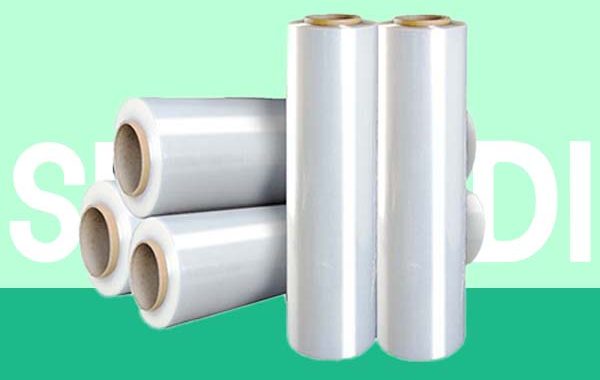Understand its precise capabilities to create a cost-effective first line of defense for outdoor storage and sensitive goods.
In environments across the U.S.—from outdoor storage yards and long-haul transportation to precision manufacturing—goods need protection not just from shifting, but from invisible threats like humidity, dust, and salt spray. Clear stretch film is a top choice due to its superior load retention and visibility. But how effective is it really against moisture and dust? The answer isn’t a simple yes or no; it’s a deep dive into materials science and application strategy.
The Principle of Protection: How Stretch Film Creates a Barrier
The protective function of clear stretch film (primarily made from LLDPE) is based on the principle of a physical barrier:
- Complete Encapsulation: The film tightly wraps the pallet load, creating a continuous, seamless package that physically blocks dust and debris from entering from the sides or top.
- Dense Molecular Structure: High-quality LLDPE film has a tight composition that effectively blocks most dust particles and airborne contaminants. While not completely impermeable to water vapor, it significantly slows moisture penetration, providing critical protection for indoor transfer or short-term outdoor storage.
- Containment and Exclusion: The wrapping creates a stable micro-environment, preventing external pollutants from entering and internal small parts or debris from falling out, maintaining cleanliness.
Performance Limits: Understanding the Capabilities
Understanding the limitations is key to proper application:
- Dust Resistance: Excellent. It provides highly effective protection against common warehouse dust, pollen, and fibers, far superior to leaving a load uncovered.
- Moisture Resistance: Limited but Useful. It can resist water splashes and short-term high humidity. However, for long-term outdoor exposure, heavy rain, or fully waterproof needs (e.g., sea freight), it is not a substitute for specialized tarps or plastic sheets. In these cases, stretch film can serve as a primary layer for stabilization and dust protection, with a waterproof cover added over it.
Selection Guide: Choosing the Right Film for Your Protection Needs
The protective performance varies with film specifications. Key selection factors include:
| Protection Need Level | Recommended Stretch Film Type | Key Performance Metrics | Ideal Use Cases |
|---|---|---|---|
| Basic Dust/Short-Term Indoor | Standard Hand/Power Film | Gauge (Thickness), Toughness | Indoor warehouse dust prevention, end-of-line packaging, domestic trucking |
| Enhanced Dust/Moisture Vapor | Pre-Stretch Film or Heavy-Duty Power Film | Gauge, Stretch Yield, Cling | Short-term outdoor storage (weeks), dusty environments (e.g., lumber mills), precision equipment |
| High-Level Protection/Visibility | UV-Resistant Stretch Film | UV Inhibitors, Gauge, Puncture Resistance | Long-term outdoor storage (months), coastal areas, high-value equipment |
| Maximum Moisture Protection (Composite Solution) | Stretch Film + External Waterproof Cover | Film’s holding force, cover’s seal | International sea freight, prolonged outdoor storage, highly moisture-sensitive goods |
Conclusion: Leverage Its Strengths for Optimal Cost-Benefit
Clear stretch film is a cost-effective solution for dust and limited moisture vapor protection. Positioning it as a “protective barrier” rather than a “waterproof seal” is key to maximizing its value. For the vast majority of U.S. warehousing and transportation needs, selecting the right specification of stretch film can solve 90% of dust and moisture concerns. For harsher environments, a composite strategy of “stretch film + professional outer cover” is the most scientific and economical choice.
Contact Us for Custom Sizes & Private Label Options
Email:packing@siliangdi.com
Email:SLD@siliangdi.com
